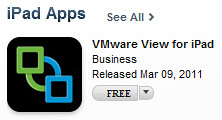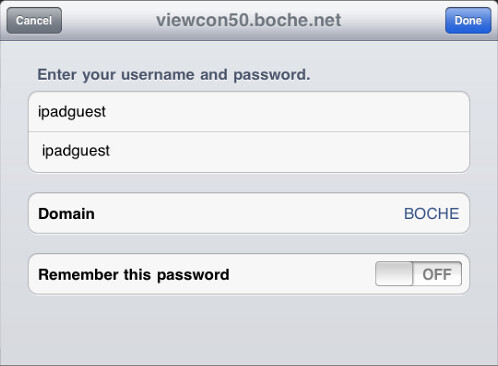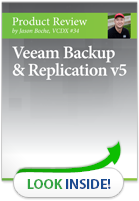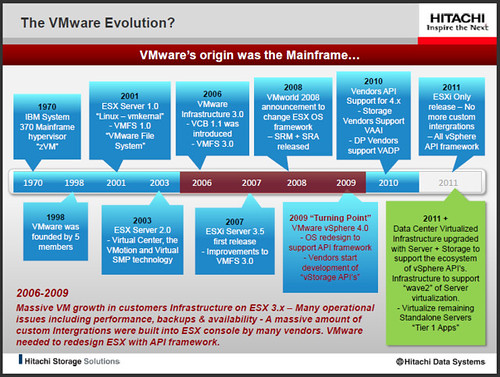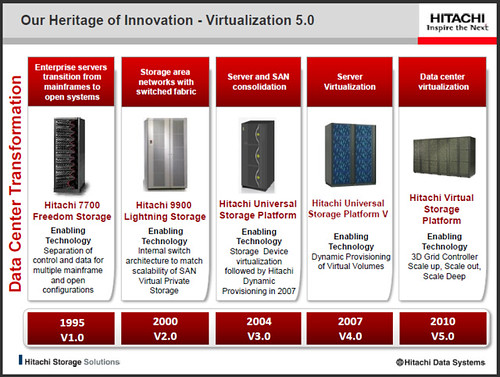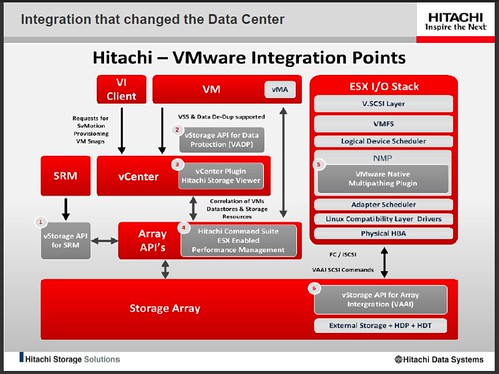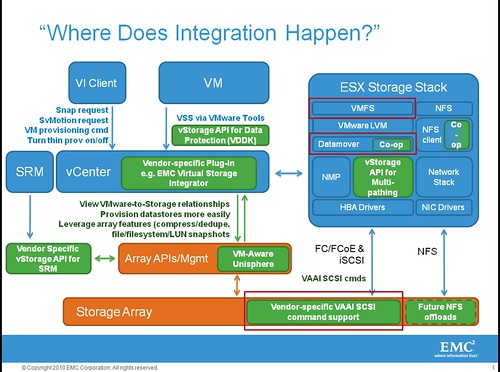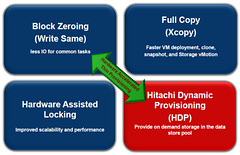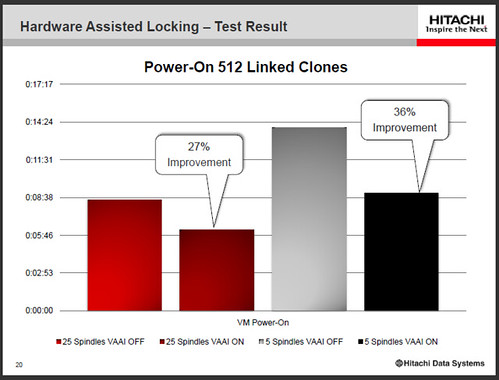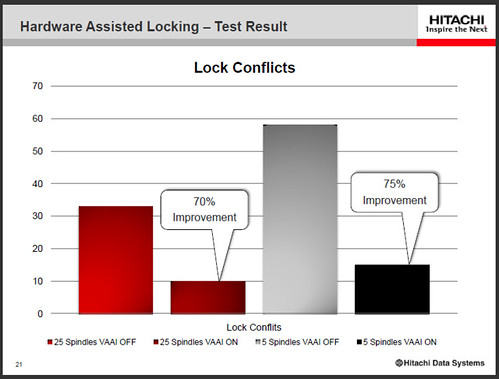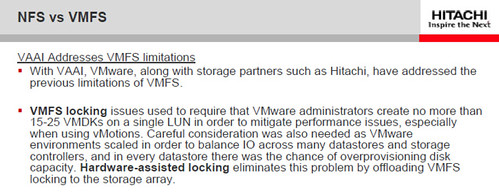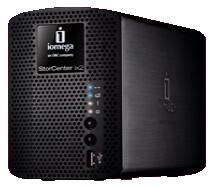
I recently acquired an Iomega ix2-200 storage appliance which is perhaps the smallest storage device in EMC’s vast portfolio, save the VMAX thumb drive I’ve heard sparse sightings of. This is a nifty little device which could prove quite useful in the home, home office, college dorm, or small business. The ix2 serves as network attached storage (NAS) capable of several protocols mapping it to many of the most popular applications. NFS, iSCSI, CIFS/SMB, Apple File Sharing, Bluetooth, FTP, TFTP (a new addition in the latest firmware update), rsync, and SNMP to name several.
A rich and easy to use browser-based interface provides access to the device and storage configuration. The package includes software which I initially installed on my Windows 7 workstation to get up and running. This software also integrates nicely with the PC it’s installed on providing file backup and other features, some of which are new in the -200 version of the appliance and cloud related. I later ditched the management software due to an annoying iSCSI configuration bug. Once the appliance is on the network, the web interface via its TCP/IP host address proved to be more reliable. My unit shipped with a fairly old version of firmware which I wasn’t initially aware of based on feedback from the management interface which claimed it was all up to date. Updating the firmware added some features and sped up iSCSI LUN creation time immensely.
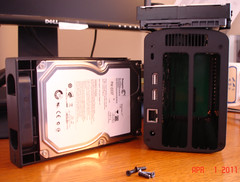 What’s included:
What’s included:
Iomega® StorCenter ix2-200 Network Storage
1 USB port on the front, 2 USB ports in the rear (for external drives, printers, and UPS connectivity)
1 Gb Ethernet port in the rear
Ethernet Cable
Power Supply
Printed Quick Install Guide & other light documentation
Software CD
Service & Support: Three year limited warranty with product registration within 90 days of purchase.
Technical Specifications:
- Desktop, compact form factor
- Width: 3.7 in (94mm)
- Length: 8.0 in (203mm)
- Height: 5.6 in (141mm)
- Weight: 5 lbs (2.27 kg)
- CPU at 1GHz with 256MB RAM
- 2 x 3.5″ Easy-Swap SATA-II Hard Disk Drives
- RAID 1, JBOD
- 1 x RJ45 10/100/1000Mbps (GbE) Ethernet port. LAN standards: IEEE 802.3, IEEE 802.3u
- 3 x USB 2.0 ports (to connect external HDD, printers, UPS, Bluetooth dongle)
- Client computers for file system access—Windows PC, Mac OS, Linux
- AC Voltage 100-240 VAC
- Power consumption – 5 Watts (min) – 19 Watts (max)
- Acoustic noise – 28 dB maximum
Application Features: The ix2-200 has an impressive set, most of which I don’t or probably will never use.
- Content sharing
- Torrent download manager
- Photo slide show
- Remote access
- Active Directory support
- USB printer sharing
- Facebook, Flickr, and YouTube integration
- Security camera integration
- Several backup options, including cloud integrated
UI Candy: The management interface consists of five main tabs: Home, Dashboard, Users, Shared Storage, and Settings. Please pardon the inconsistent cropping crudity:




The ix2 ships with 2x 1TB SATA-II drives. RAID 1 (mirror) with automatic RAID rebuild and RAID 0 (Stripe w/o parity) support as well as JBOD mode also available.


Temperature and fan status. My unit seems hot; I need to check that fan showing 0 RPM:

Believe it or not, Jumbo Frames support at either 4000 or 9000 MTU:

Speaking of jumbo frames, what about performance? I was pleasantly surprised to find the ix2-200 officially supported by VMware vSphere for both iSCSI and NAS. I’m in it for the vSphere use case so I benchmarked NFS and iSCSI in a way which is consistent with how I’ve performed previous storage performance tests which can also be compared in the VMware community (take a look here and here for those comparisons). With two spindles, I wasn’t expecting grand results but I was curious nonetheless and I also wanted to share and compare with some co-workers who tested their home storage this past week. Performance results were at times inconsistent during multiple runs of the same IO test. In addition, NFS performance decreased after applying the latest firmware update.
iSCSI
ix2 iSCSI feels like a no-frills implementation. iSCSI LUN security is user and Mutual CHAP based and seems particularly weak. Individual LUNs can only be secured on a per user basis. The user based security isn’t supported by vSphere and the CHAP implementation doesn’t seem to work at all in that my ESXi host was able to read/write to an ix2 LUN without having the required CHAP secret. In summary, the only viable ESXi configuration is to connect the host or hosts to an unsecured iSCSI LUN or set of LUNs on the ix2. Risks here include lack of data security as well as integrity since any host on the network with an iSCSI initiator can read/write to the iSCSI LUN. As far as I can tell, there is no thin or virtual provisioning at the ix2 layer when creating iSCSI block LUNs. This is merely an observation; I wasn’t expecting support for thin provisioning, dedupe, or compression.
NFS
NFS is more secure on the ix2 in that volume access can be restricted to a single IP address of the vSphere host. Volumes are also secured individually which provides granularity. It’s also flexible enough to support global subnet based access. These are security features commonly found in enterprise NFS storage. Similar to iSCSI above, NFS also supports user based access which again doesn’t provide much value in the vSphere use case.
I’m not going to speak much in detail about the performance results. I didn’t have much along the lines of expectations and I think the results speak for themselves. iSCSI performed marginally better with the RealLife test. However, I’m not convinced the security trade off makes iSCSI a clear winner. Coupling the advantage in the Max Throughput test, I’m more in favor of NFS overall with the ix2-200.
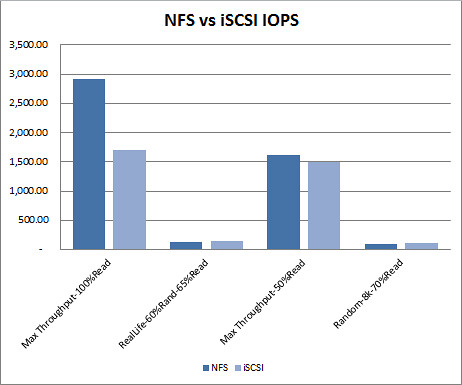
Supporting performance data collected from Iometer:
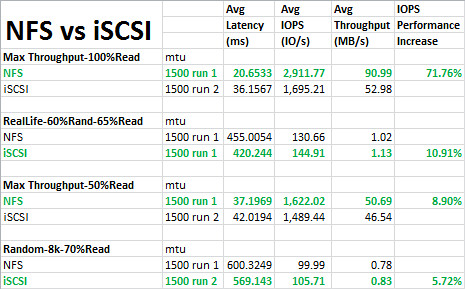
Reliability of the ix2-200 is in the back of my mind. I’ve heard one report of frequent failures and loss of RAID/data with the bigger brother Iomega ix4. Time will tell. With that, I won’t be placing any important data on the ix2. As it is, I blew away the factory default RAID1 configuration for double the density, spindle, and performance of RAID0. My intent for the ix2 is to use it as cheap lab storage for vSphere and potentially backup during the summer months.
For more on the ix2, take a look at a nice writeup Stephen Foskett produced quite a while back.
